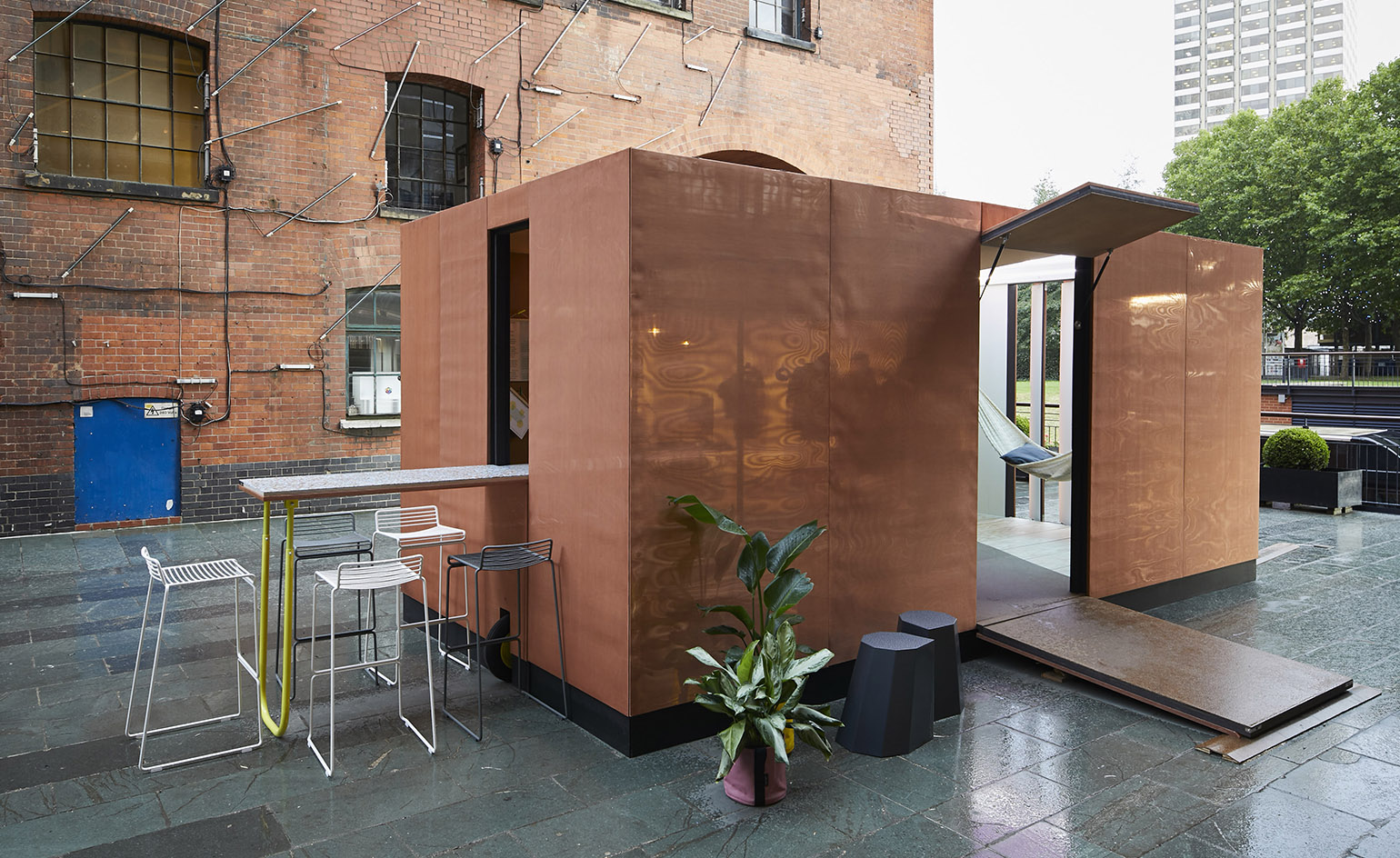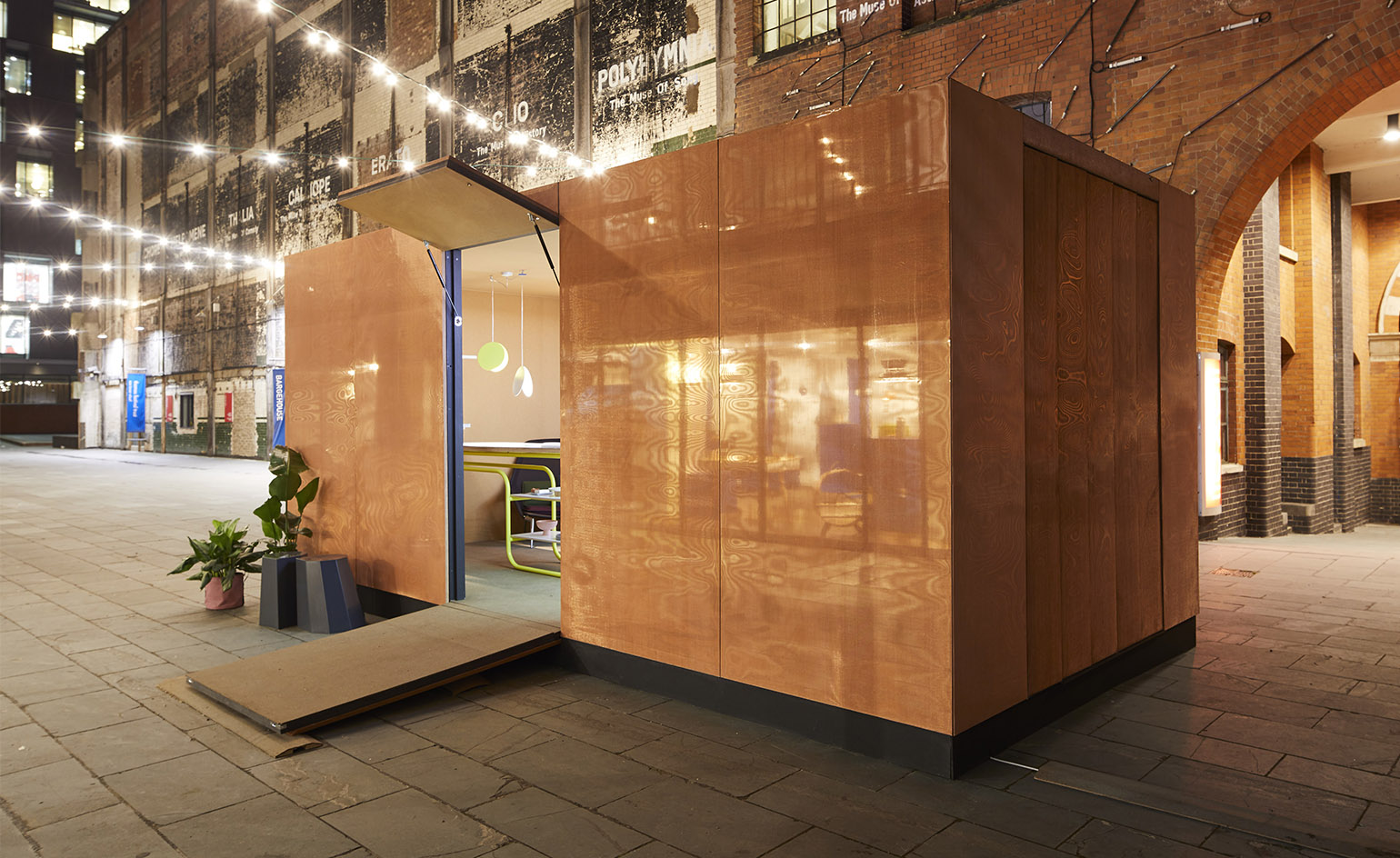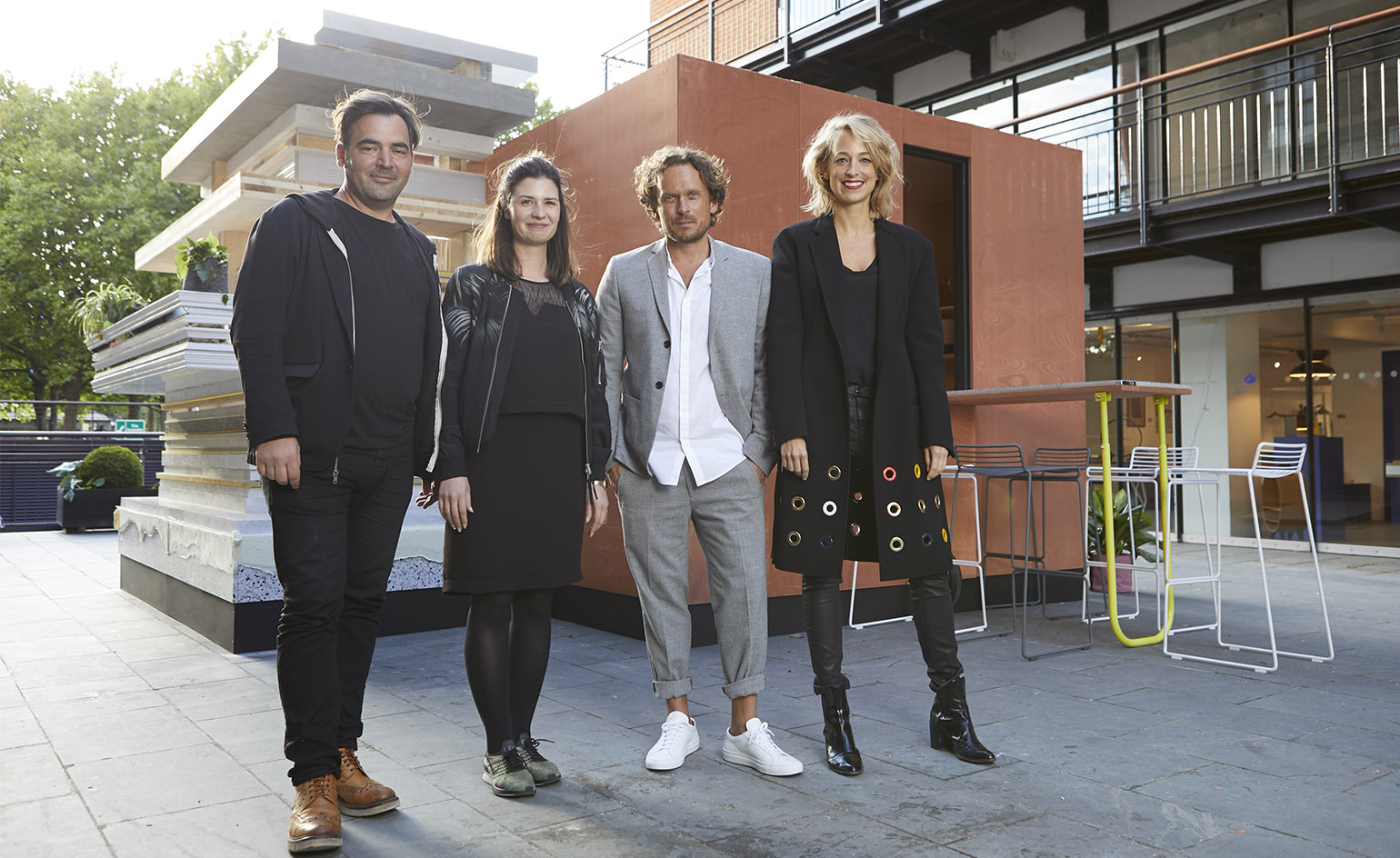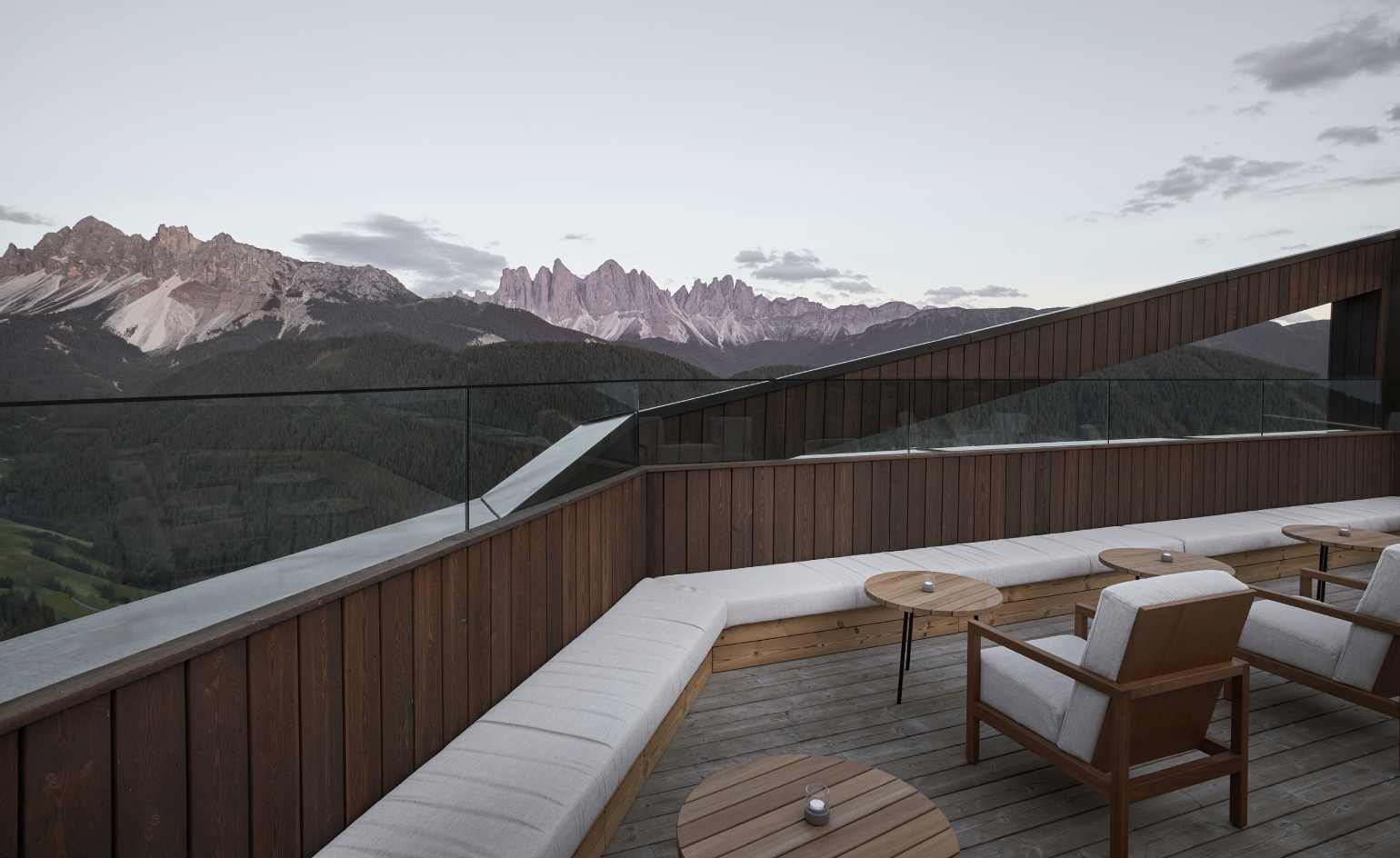Opening up the urban experience
MINI LIVING'S URBAN CABIN demonstrates the power of multifunctional design

What is the future of city living? MINI LIVING is about extending the expertise of MINI design into the urban realm to create initiatives that explore new ways of living, working and interacting with the modern city environment. For this year’s London Design Festival, MINI LIVING has created URBAN CABIN, an ultra-compact installation that demonstrates the power of multifunctional design when space is at a premium. A collaboration between MINI and architect Sam Jacob Studio, the cabin is installed in the OXO Tower Wharf Courtyard. Jacob was a co-founder of the now-defunct FAT Architects and shares MINI’s philosophy of playful efficiency. As an acclaimed designer, educator and polemicist, his projects, such as a hairdressing salon with integral art gallery, demonstrate a fascination with mixed-up typologies as well as a belief in using design to create both meaning and place.
URBAN CABIN is a creative new take on communal space, combining both work and pleasure functions. Shaped in the MINI LIVING studio, this compact, 15 sq m modular space comprises of two mirrored and copper mesh structures. Intended to evoke London’s fluid, frantic but always essential relationship with culture and creativity, each URBAN CABIN is divided into a shared kitchen and an experience room. In London, Jacob’s experience room is a micro-library, a space that highlights how many precious city resources, such as the traditional library, are now under threat.
Jacob describes the space as ‘emulating London's stacked skyline’, both in terms of form and content. MINI LIVING’s creative lead, Oke Hauser, hopes the library will kindle debates and connections. The reading list – including a Wallpaper* sanctioned set of titles – contains books old and new that have been chosen to evoke the spirit of London life through the centuries. The book swap is a literal application of the sharing economy, a catalyst for positive change that helps to connect, inspire and engage through shared stories and histories.
URBAN CABIN’s micro-house scale also addresses that other great capital absence, space. URBAN CABIN’s shared kitchen is a social hub, reflecting the fact that making and sharing food continues to be an integral element of London life. An expanding table and louvered walls allow the space to grow outwards or contract inwards depending on demand.
MINI’s spiritual origins are in the creation of the world’s original compact city car. MINI LIVING takes that heritage to another level, exploring the social, architectural and cultural role of the spaces inside and outside our cars, and how design can improve these for the better. By combining the company’s design skills with collaborators from every creative field, MINI LIVING explores new ways to work, live, and play in the city. Cities are about connections, and URBAN CABIN infuses the marque’s spirit of fun, adventure and innovation into a place for coming together; a space in which to eat, socialise, learn and share our experiences.

The kitchen, left, features a table that extends the dining area out into the public realm for shared meals and more

A micro-library offers insights in London, past, present and future, to read, share and discuss. The slatted wall of the living space allows the room to be opened or closed to the street

With slats closed, the copper-clad URBAN CABIN becomes an inscrutable object in the cityscape, the copper skin reflecting and distorting its surroundings

The kitchen is compact and perfectly planned. The terrazo table doubles as a work surface and the adjustable shelving give the space an ad-hoc, flexible feel, despite its scale

From left to right, architect Sam Jacob, MINI LIVING experience designer Corinna Natter, MINI LIVING creative lead Oke Hauser, MINI head of brand strategy and business innovation Esther Bahne
INFORMATION
For more information, visit the MINI LIVING
Receive our daily digest of inspiration, escapism and design stories from around the world direct to your inbox.
Ellie Stathaki is the Architecture & Environment Director at Wallpaper*. She trained as an architect at the Aristotle University of Thessaloniki in Greece and studied architectural history at the Bartlett in London. Now an established journalist, she has been a member of the Wallpaper* team since 2006, visiting buildings across the globe and interviewing leading architects such as Tadao Ando and Rem Koolhaas. Ellie has also taken part in judging panels, moderated events, curated shows and contributed in books, such as The Contemporary House (Thames & Hudson, 2018), Glenn Sestig Architecture Diary (2020) and House London (2022).
-
 Inside Helmut Lang’s fashion archive in Vienna, which still defines how we dress today
Inside Helmut Lang’s fashion archive in Vienna, which still defines how we dress todayNew exhibition ‘Séance de Travail 1986-2005’ at MAK in Vienna puts Helmut Lang’s extraordinary fashion archive on view for the first time, capturing the Austrian designer-turned-artist’s enduring legacy
-
 Eclectic and colourful, Charlie Ferrer’s home reflects the interior designer’s personal and professional evolution
Eclectic and colourful, Charlie Ferrer’s home reflects the interior designer’s personal and professional evolutionThe New York interior designer invites us into his new Greenwich Village home: come on in
-
 Heading to the 2026 Winter Olympic Games? Don’t miss these stops along the way
Heading to the 2026 Winter Olympic Games? Don’t miss these stops along the wayAs the anticipated winter games draw near, Wallpaper*’s Milan editor, Laura May Todd, shares where to stay, eat, drink and relax in the Dolomites
-
 RIBA House of the Year 2025 is a ‘rare mixture of sensitivity and boldness’
RIBA House of the Year 2025 is a ‘rare mixture of sensitivity and boldness’Topping the list of seven shortlisted homes, Izat Arundell’s Hebridean self-build – named Caochan na Creige – is announced as the RIBA House of the Year 2025
-
 In addition to brutalist buildings, Alison Smithson designed some of the most creative Christmas cards we've seen
In addition to brutalist buildings, Alison Smithson designed some of the most creative Christmas cards we've seenThe architect’s collection of season’s greetings is on show at the Roca London Gallery, just in time for the holidays
-
 In South Wales, a remote coastal farmhouse flaunts its modern revamp, primed for hosting
In South Wales, a remote coastal farmhouse flaunts its modern revamp, primed for hostingA farmhouse perched on the Gower Peninsula, Delfyd Farm reveals its ground-floor refresh by architecture studio Rural Office, which created a cosy home with breathtaking views
-
 A revived public space in Aberdeen is named Scotland’s building of the year
A revived public space in Aberdeen is named Scotland’s building of the yearAberdeen's Union Terrace Gardens by Stallan-Brand Architecture + Design and LDA Design wins the 2025 Andrew Doolan Best Building in Scotland Award
-
 The Architecture Edit: Wallpaper’s houses of the month
The Architecture Edit: Wallpaper’s houses of the monthFrom wineries-turned-music studios to fire-resistant holiday homes, these are the properties that have most impressed the Wallpaper* editors this month
-
 A refreshed 1950s apartment in East London allows for moments of discovery
A refreshed 1950s apartment in East London allows for moments of discoveryWith this 1950s apartment redesign, London-based architects Studio Naama wanted to create a residence which reflects the fun and individual nature of the clients
-
 In this Cotswolds home, drama meets minimalism
In this Cotswolds home, drama meets minimalismCotswolds home Hiaven house, with interiors designed by McLaren Excell, is a perfect blend of contemporary chic and calm, countryside drama
-
 David Kohn’s first book, ‘Stages’, is unpredictable, experimental and informative
David Kohn’s first book, ‘Stages’, is unpredictable, experimental and informativeThe first book on David Kohn Architects focuses on the work of the award-winning London-based practice; ‘Stages’ is an innovative monograph in 12 parts